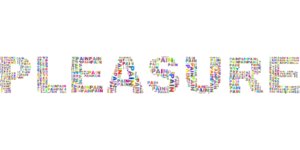This is a cautionary tale of how “the zone” or flow state can skew reality and common sense.

Several years ago, I turned the sunroom into my office. All the windows allow me a panoramic view of “Animal Planet,” the lower level of the yard where I feed my crows, ravens, jays, cardinals, barn birds, squirrels, chippies, and anyone else who needs an easy meal.
It’s my happy place.
For years, I dreaded winter. The cold weather meant I had to move my office into the spare bedroom, because my converted office had no heat. That changed with the installation of a mini split, an electrical unit for heat and AC. But they can only handle so much.
Here in New Hampshire, the recent temps plummeted to single digits with “feels like” temperatures well below zero. It’s a big ask for a mini split. But I’m stubborn, so I bundle up in warm clothes and write for as long as possible before I must grab my MacBook and head into the living room for the rest of the day.
Yesterday (as of this writing), we had one of the coldest days we’ve had all winter. Downright frigid in my office, with frost crystalized around the windows. The mini split coughed out bursts of heat in between shutdowns to gain its bearings. Didn’t matter that I cranked the thermostat to 76 degrees.
The unit basically told me to pound sand. “Be happy with what I give you.”
Fair enough.
I’m at a point in the WIP where I’ve reached total obsession. You know that point in every project where things gel easier, words flow, excitement builds, milestones/goalposts whip by with less effort? Uh-ha, that’s the place. I’ve also had two scenes rolling around my head for days—weeks?—but it wasn’t time to write them yet.
There’s nothing wrong with jumping ahead to write a specific scene. Sometimes, I do the same. My preference is to let the scenes simmer inside me till they reach a boiling point. If my and my character’s obsession align, all that pent-up anticipation transfers to the page.
If you haven’t experienced this mild form of psychological torture, it’s effective. At least, it is for me.
Ahem. Anyway…
When my husband left for work at 4:30 a.m., I ventured into my office with a hot tea and the expectation that I’d only write at my desk till sunrise, then I’d snuggle up by the wood stove with my MacBook.
The first time I noticed the clock it read 10:30 a.m. But I was mid-scene. I couldn’t switch to my MacBook now. If I’m on a roll, I’ll never mess with the mojo that got me there.
Yes, I know how superstitious that sounds. Don’t we all have a few weird writing quirks?
The next time I glanced up from the screen, the clock read 2:30 p.m. But again, I was midway through another scene and not willing to risk losing momentum. At this point, I was also super high on craft and probably not in any condition to make decisions about my well-being, with serotonin, adrenaline, and dopamine coursing through my system. 😉

There I stayed in a suspended state of euphoria till the sun lowered toward the horizon. And I marveled at the pink sky interspersed with violet hues.
All my animal pals returned to their burrows, trees, and nests, the lower level now devoid of wildlife.
Still, I ignored the darkness swallowing daylight, my complete focus on the screen, my fingers barely able to keep up with the enticing hum of neurons firing.
When my husband returned from running errands after work, he strode into my cold, dark office. “Step away from the desk, honey. Now. That heater shut off hours ago.”
“It did?”
“Must’ve. It’s freezing in here.”
“Is it?”
I never once felt cold. Not once. I was so immersed in my story world, and drunk on intoxicating hormones, I left New Hampshire before dawn. All day I’d been chasing bad guys through the woods of Montana, dodging bullets and encounters with predators. I laughed. I cried. I feared. I rejoiced. I experienced the entire spectrum of emotions right alongside my characters from dawn to dusk.
It wasn’t till I strolled into the warm living room that I felt the first pang of stiffness, muscle aches, and joint pain.
What can we learn from this, kiddies?
There are worse ways to die. Kidding.
Sort of.
Clear Takeaways
- Don’t sacrifice your wellbeing, or safety.
- The human body needs blood flow. Get up and move.
- The mind is a beautiful place. Take good care of it.
- You only get one life. Don’t sacrifice a second.
- Lastly, take the time to admire the natural beauty around you, like sunrises and sunsets.
Do I regret it?
The correct answer is yes, but I don’t. Not one bit. Those chapters rock. 😉 Do as I say, not as I do.
Have you ever gotten “lost” while writing? Tell us about it.










 Back in 2015, I was chatting with a dear writer friend, Paul Dale Anderson, about the different types of writers and readers.
Back in 2015, I was chatting with a dear writer friend, Paul Dale Anderson, about the different types of writers and readers.
 Last night, my husband and I went to a pumpkin festival with another couple. The town blocks off downtown’s main drag, and skeletons, witches, monsters, live music, and laser shows filled the streets.
Last night, my husband and I went to a pumpkin festival with another couple. The town blocks off downtown’s main drag, and skeletons, witches, monsters, live music, and laser shows filled the streets.












